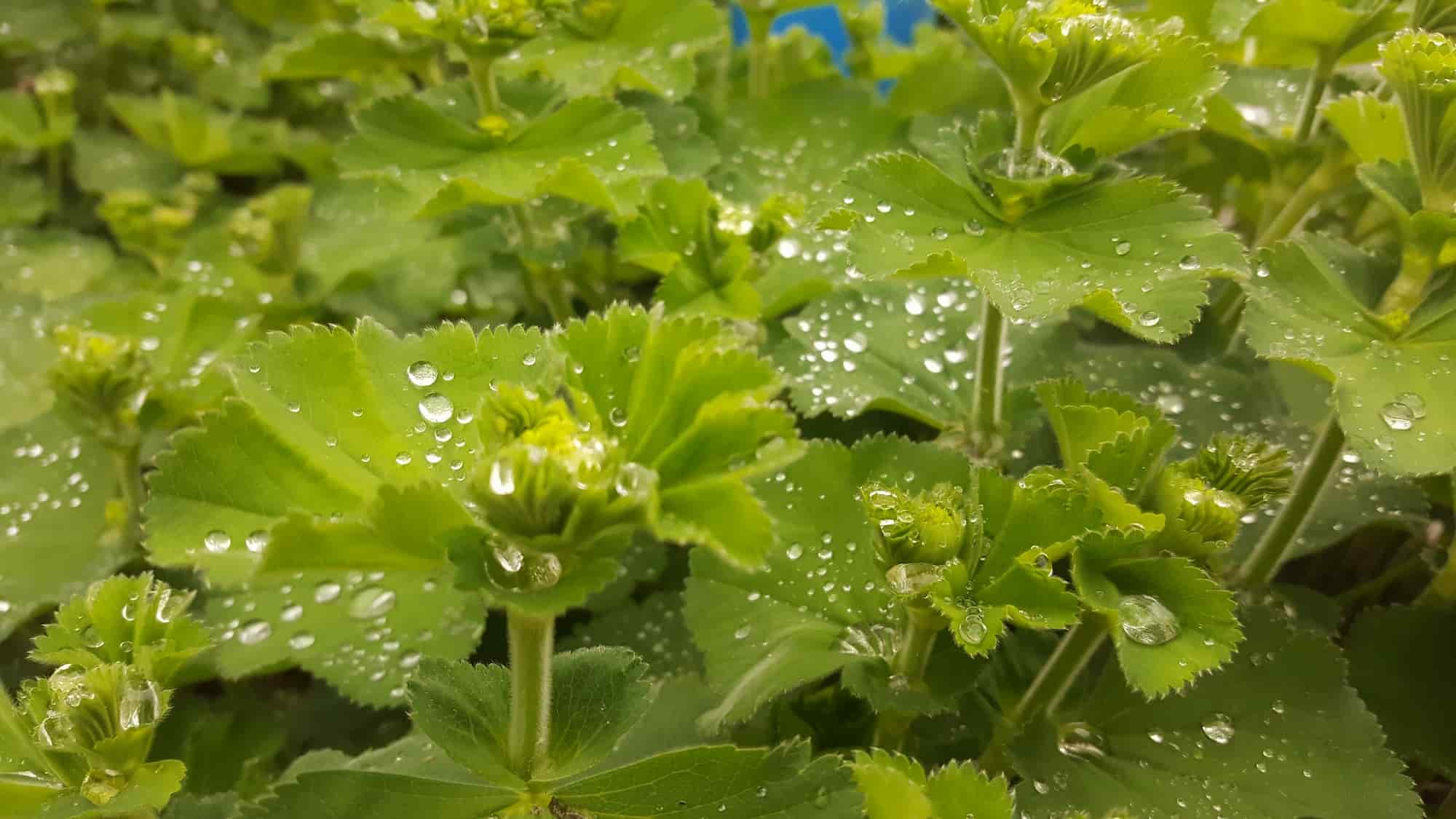
Associate lady's mantle
Discover our pairing ideas
Contents
With its lovely green foliage that forms a basin to catch droplets of dew or rain and its small summer flowers clustered in light clusters of a beautiful chartreuse green, lady’s mantle (Alchemilla) is a wonderful addition to the ornamental garden. This hardy perennial from the Rosaceae family, with its crenate leaves, is perfectly adaptable to various growing conditions in partial shade or full sun. It also boasts the advantages of being hardy down to -15°C and requiring minimal care. Additionally, it has the ability to self-seed easily and form relatively dense clumps. Ideal as a groundcover or in rockeries, it also finds its place in borders of natural or romantic flowerbeds.
Follow us to discover how to pair lady’s mantle with delightful flowers of such a unique colour to create harmonious and original flowerbeds.
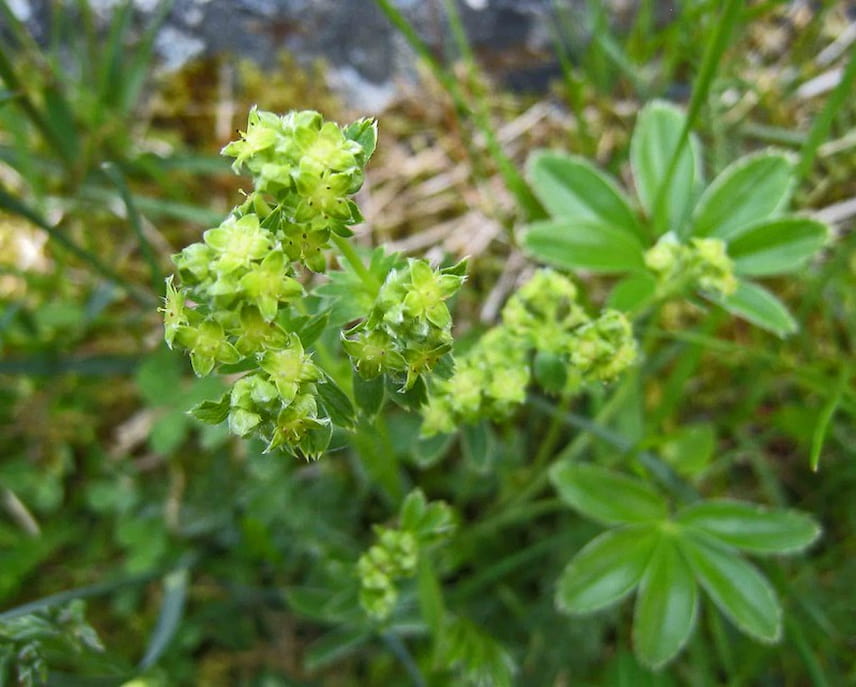
Lady’s mantle has many advantages for placement in flowerbeds, rockeries, or under trees
And to learn everything about the cultivation of this perennial, dive into our article Lady’s mantle, planting, growing, and care
In an English romantic garden
Let yourself drift into daydreams… Imagine an English-inspired garden, traversed by a winding little path. Sit on the small bench and look around you. On the pergola climbs a Clair Matin climbing rose, a ‘Henryi’ clematis, or an original Wattakaka sinensis. At the base sprawls a “mixed-border” bed where Lady’s mantle (Alchemilla mollis) forms dense clumps of foliage that blend beautifully with peach-leaved bellflowers (Campanula persicifolia) or foxgloves that, like the lady’s mantle, thrive equally well in partial shade or a sunny border. A few willow-leaved yellow loosestrife (Lysimachia ephemerum) complete the picture alongside a lactiflora peony ‘Madame Calot’ with undeniable romantic charm.
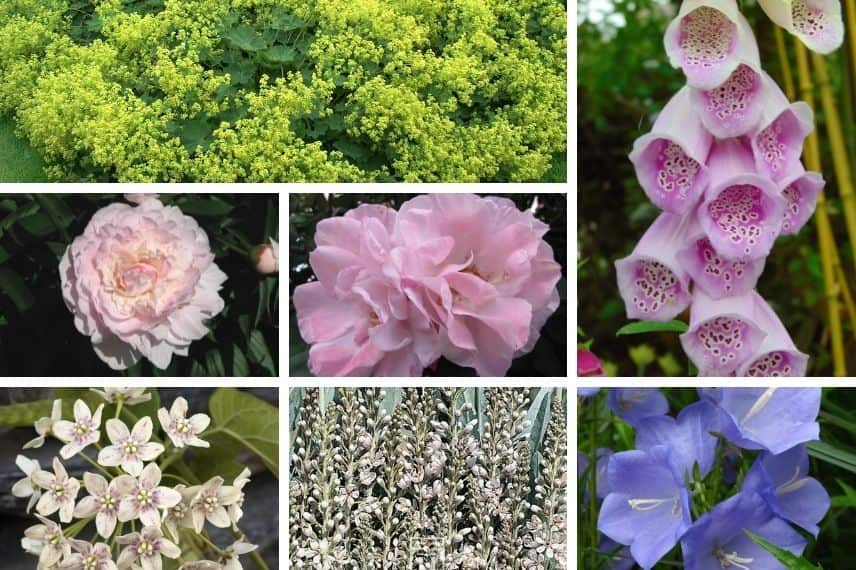
Alchemilla mollis, lactiflora peony ‘Madame Calot’, Clair Matin rose, Digitalis purpurea, Wattakaka sinensis, ephemeral Epimedium, peach-leaved bellflower.
Read also
Alchemilla: planting, growing and careOn the edge of a natural bed
In a natural border, nature reigns supreme. Throughout the seasons, the flowerings follow one another in perfect harmony. As for the colours, they create vibrant palettes or subtle monochrome shades. Alchemilla epipsila easily finds its place at the edge of natural borders, softening and framing them with its airy flowering and slightly velvety foliage. Dew-kissed leaves enhance the flowers of a hardy geranium ‘Azure Rush’, Delphiniums belladonna ‘Cliveden Beauty’, wild mallows with delightfully pastel-hued flowers, nervous catmints (Nepeta nervosa), and hybrid Penstemons ‘White Bedder’, creating a lush border with delightful bluish tones.
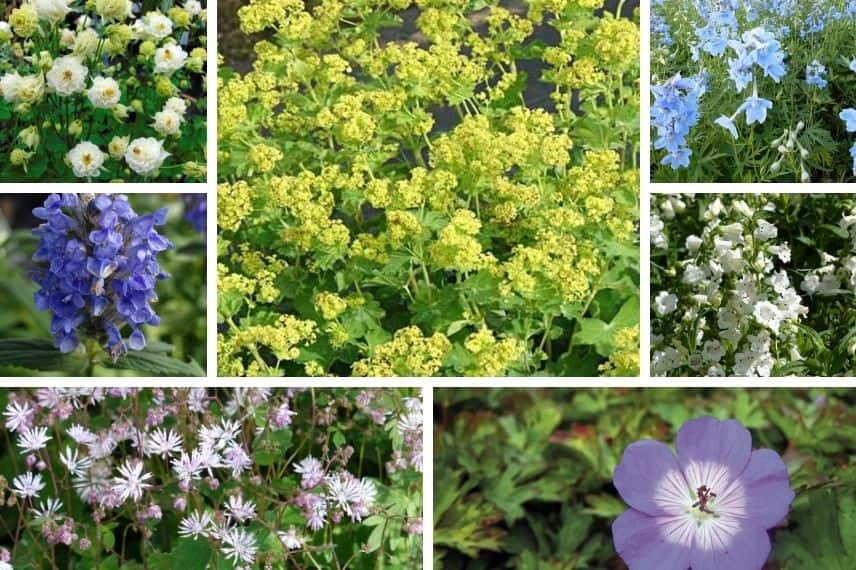
Aquilegia vulgaris ‘Winky White and White’, Nepeta nervosa, Thalictrum kiusianum, hardy geranium Azure Rush, Penstemon ‘White Bedder’, Delphinium belladonna ‘Cliveden Beauty’ are associated with Alchemilla epipsila
Feel free to add perennial daisies, which are essential for a natural garden with their long flowering period, tuberous Phlomis ‘Amazone’ (Phlomis tuberosa) paired with white columbines such as Aquilegia vulgaris ‘Winky White and White’ and a dwarf meadow rue (Thalictrum kiusianum) that offers pom-pom flowers in a delightful pink-mauve from April to June and again in September.
Discover other Alchemilla
View all →Available in 2 sizes
Available in 3 sizes
Available in 1 sizes
Available in 3 sizes
Available in 1 sizes
Available in 1 sizes
Available in 1 sizes
Available in 1 sizes
In a shaded or semi-shaded garden
Creating a garden in partial shade or full shade may seem like a challenge, just like planting at the base of trees or bushes. However, there are many perennial plants or bushes that thrive with limited light. In its natural habitat, lady’s mantle often grows at the forest edge, making it well-suited for a partially shaded garden or under the more or less dense canopy of trees or shrubs. It will brighten up the darker corners with its flowering clumps, showcasing a hue that ranges from lime green to yellow. Thus, plant common lady’s mantle (Alchemilla vulgaris) alongside a German fern (Matteuccia pensylvania), hostas, a ‘Lime Rickey’ heuchera with crinkled yellow-green foliage, enhanced with a splash of colour from an astilbe that, like lady’s mantle, enjoys heavy, moist soil, or a lovely verbena delicately coloured in lavender blue.
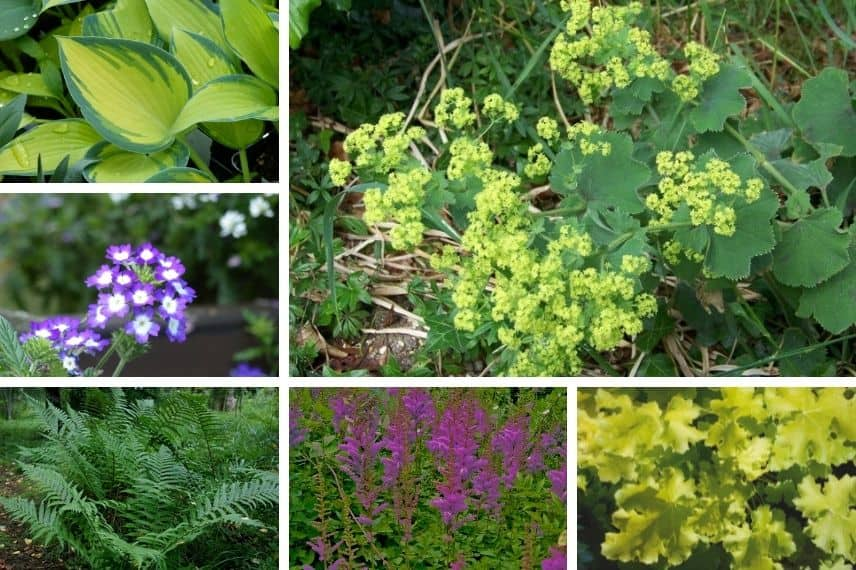
Hosta ‘June’, Verbena, Matteuccia pensylvania, Astilbe chinensis var.taqueti superba, Heuchera ‘Lime Rickey’, associated with Alchemilla vulgaris
As for the ‘Acer palmatum ‘Little Princess’, a beautiful Japanese maple with tender green foliage edged in red, it will add a zen touch to the overall display.
Read also
10 plants to create a shady rockeryIn a semi-shaded rockery
Unlike sunny rockeries, made up of drought-resistant ground-covering plants, a rockery in partial shade is constructed differently. It features perennial plants with decorative foliage alongside those with delicate flowering to add splashes of colour or create a monochrome cushion. Alchemilla erythropoda thrives in a partial shade rockery, quickly covering it with lovely dense cushions of blue-green foliage. Pair this lady’s mantle with a Nandina domestica ‘Twilight’ with its bright foliage, helianthemums ‘The Bride’, a ground-covering variety with silver-green foliage and abundant white and gold flowers, a Saxifraga fortunei ‘Rubrifolia’, and a golden carex elata. Lovely tiarella with white spikes and elf flowers (Epimedium pubigerum) will produce a flurry of small white flowers. To decorate your rockery and add a mineral touch, consider a few large slate-grey stones scattered here and there among the perennials.
For pot growing
Alchemilla can be grown in pots, in a light substrate and in a partially shaded location. Particularly spreading, it will look most effective in a long planter, at least 30 cm deep, allowing it to spread comfortably. To achieve a harmonious and colourful display, choose a low-growing variety of alchemilla such as Alchemilla alpina, Alchemilla epipsola, or Alchemilla erythropoda that you can pair with other species of perennials. Thus, for a simple, light yet elegant pot, simply plant your alchemilla with a hardy geranium that will add a splash of colour or some dianthus.
If you want to draw attention on a terrace with a profusion of colours, combine your alchemilla with dwarf rudbeckias or dwarf ligularias in yellow, such as Ligularia dentata Pandora®. For a palette more tinted with mauve and blue, pair your alchemilla with Polemomium in the background, and anagallis in the foreground that will cascade down. You can also sow seeds of Brachycome, ideal for complementing a hanging pot.
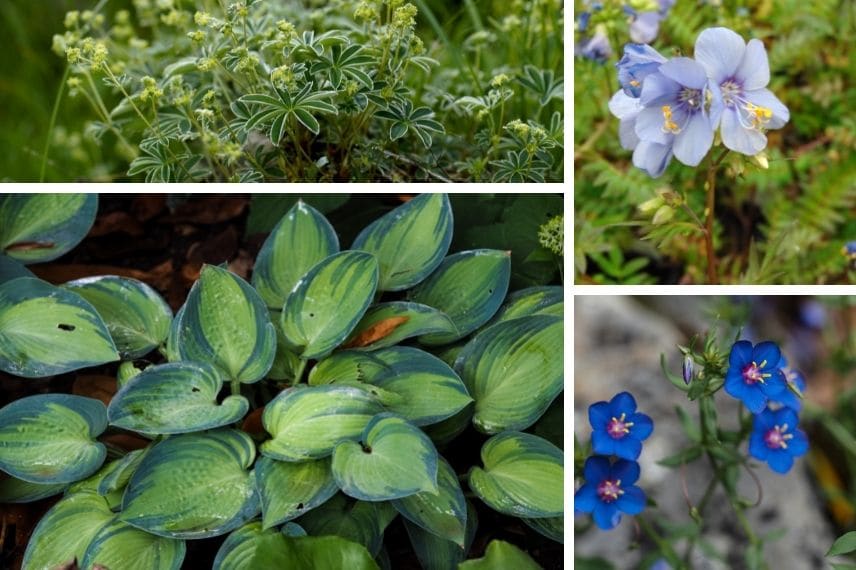
Alchemilla alpina, Hosta June, Polemomium yezoense Purple Rain, Anagallis monelli.
To bring foliage of different shades, hostas and heucheras will thrive in pots alongside alchemilla.
- Subscribe!
- Contents
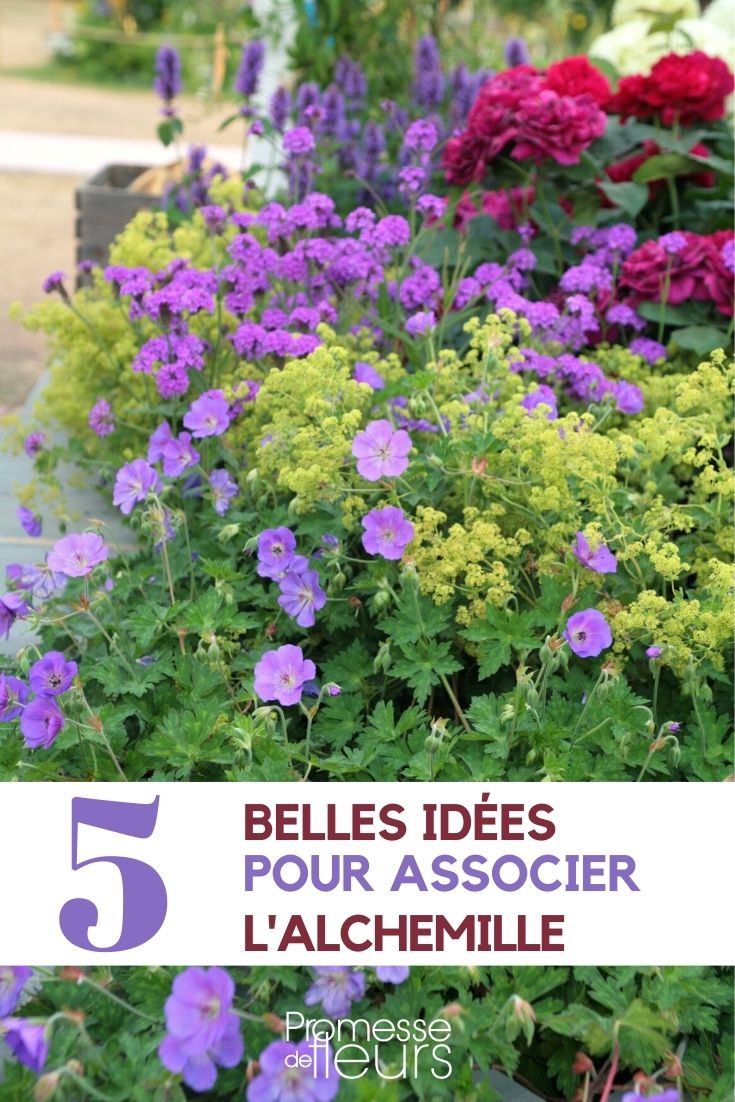































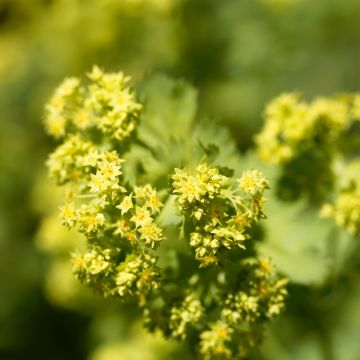
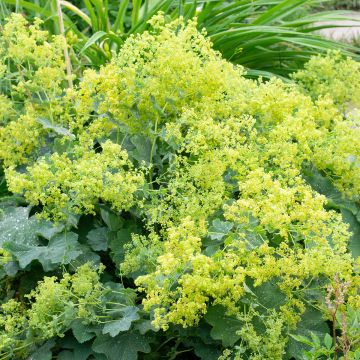
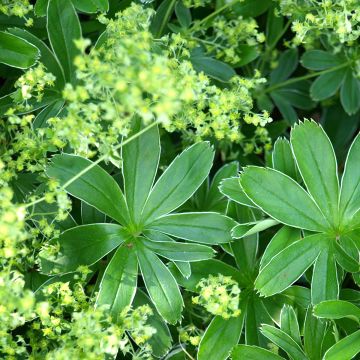
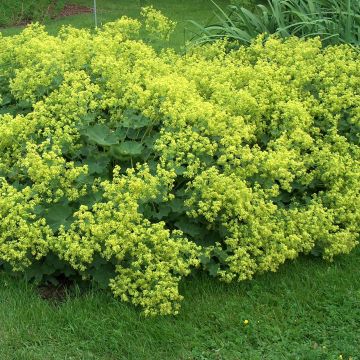
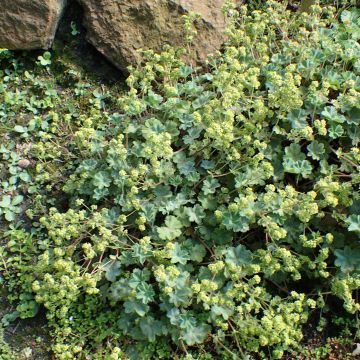
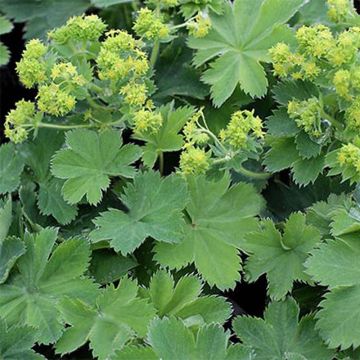
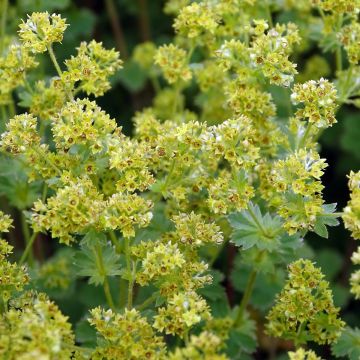
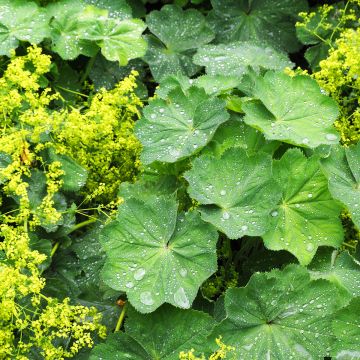
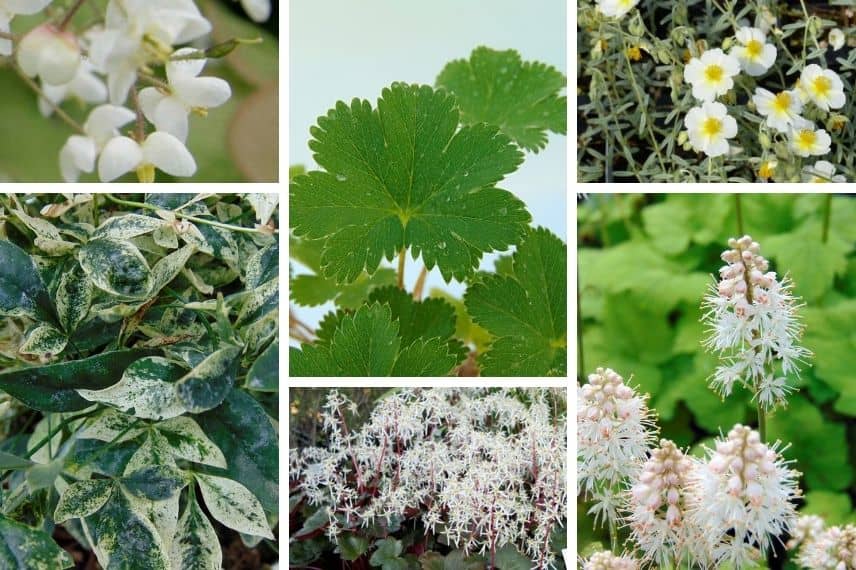
Comments